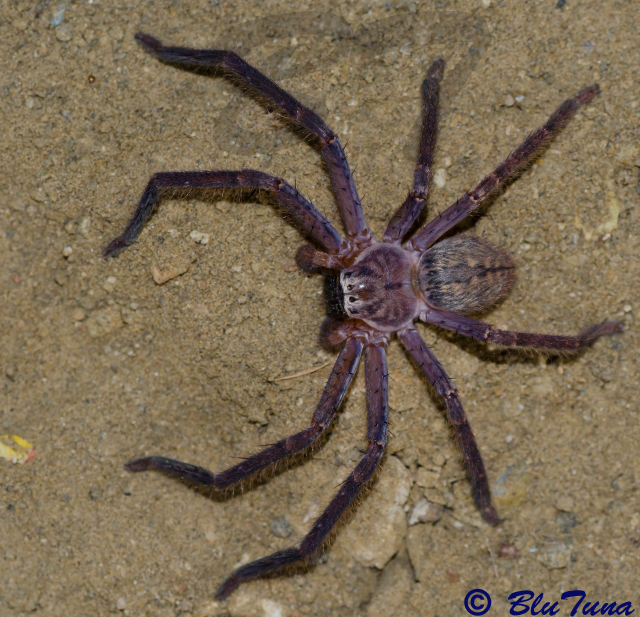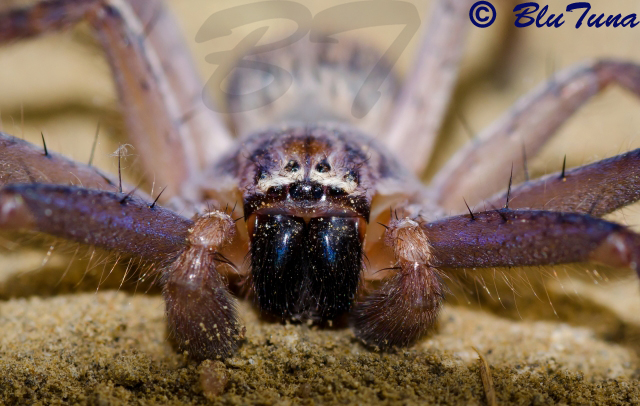Sparassidae (Huntsman Spiders)
Sparassidae spiders (huntsman spiders) are often confused with the family Theraphosidae (Baboon spiders). The latter are more bulky and very hairy without the typical ventral markings. Sparassids can be confused with spiders of the Ctenidae and Pisauridae families. Sparassids are commonly known as huntsman spiders and large wandering crab spiders. Afrikaans names are grootdwaalkrapspinnekop and jagspinnekop.
The family Sparassidae is a large family comprising 83 genera of which 34 are known from the Afrotropical cal Region. From South Africa 9 genera represented by 56 species are known of which 40 are endemics.
Body size
6-40 mm with leg span up to 100 mm (males slightly smaller and more slender).
Diagnostic characters
Colour: cream, fawn to dark brown or grey, often with darker stripes and mottled patterns while some species of
Olios and
Pseudomicrommata are green.
Carapace: round to ovall, narrower in eye area, fovea present.
Eyes: 8 in 2 rows (4:4) with the posterior eye row evenly spaced, equal in size while the size of eyes in anterior row varies between genera, with the median eyes usually largest.
Abdomen: hairy, round to oval, often with dark, median heart mark.
Legs: long, positioned side-ways and held at right-angle to body, the tarsi with dense claw tufts.
Web and retreat
Web: absent; retreat: some genera live in silk-lined burrows while other make silken retreats to reside in when not active.
Habitat
The sparassids are found in diverse habitats ranging from desert to coastal and montane
forest. Some genera like Pseudomicrommata
common in grassland and savanna while some species of
Palystes are found in and around houses.
Behaviour
Most of the sparassids are large noctural spiders wandering around in search of prey. When disturbed they raise their front legs in warning.
Palystes, is large spiders frequently entering houses, usually one or two days before it starts to rain, hence their common name "rain spiders". They are often noticed at night on the walls of rooms where they prey on insects attracted to the light source.
Genera native to southern Africa:
Arandisa: One species (monotypic),
Arandisa deserticola, a Namibian endemic. 10.8mm.
Carparachne: Two species, endemic to dunes of the southern Namib Desert in Namibia.
Eusparassus (Rock huntsman spider): Presently the only species in the genus is
Eusparassus palystiformis, known from southern Africa.
Leucorchestris (white lady spiders): a psammophilous genus occurring on sand dunes in arid areas, Namibia, Angola and the Northern Cape, South Africa.
May: 3 species recorded from Namibia, 1 species from South Africa (Kalahari).
Microrchestris: a Namibian endemic genus with two small-sized species (10-12mm long).
Olios: 27 species recorded from southern Africa; smaller spiders (Body length is 10-14 mm), either light brown and live under rocks (rupicolus) or green and live on trees (arboreal). The rock-dwelling species produce a flattish sac retreat and egg sac attached to the underside of a rock or stone.
Orchestrella: a Namibian endemic genus with two species (10-18 mm long).
Palystella: a Namibian endemic genus with four species (11-18 mm long).
Palystes (rain spiders): Occur mainly on plants where they hunt predominantly insects but they also eat geckos. Large spiders, come indoors. Females of the two common species,
Palystes castaneus and
Palystes superciliosus, construct an egg case in a bush that is made of dead leaves and twigs drawn together with silk and with a white silk covering.
Panaretella (forest huntsman spiders): a genus of small spiders endemic to the forests from Grahamstown to northern Kwazulu-Natal. Five species. The retreat is two leaves spun together with silk. Body length 12-18 mm. They vary from a yellowish to a light reddish brown colour with a distinctive black mark on either side anterior of the spinnerets.
Parapalystes: Five species, endemic to southern Africa.
Pseudomicrommata: a monotypic genus with only one species,
Pseudomicrommata longipes. Found in areas with
Eragrostis grass where it constructs its large nest. Easily recognised by the medial dorsal band running the length of its body.
Genera naturalised in southern Africa:
Heteropoda:
Heteropoda venatoria (Brown huntsman spider), a species with a pantropical distribution, has been introduced to Mozambique and South Africa.
Links:
Biodiversity Explorer;
Atlas of the Spiders of South Africa
https://books.google.de/books?id=RKs_Dw ... ca&f=false
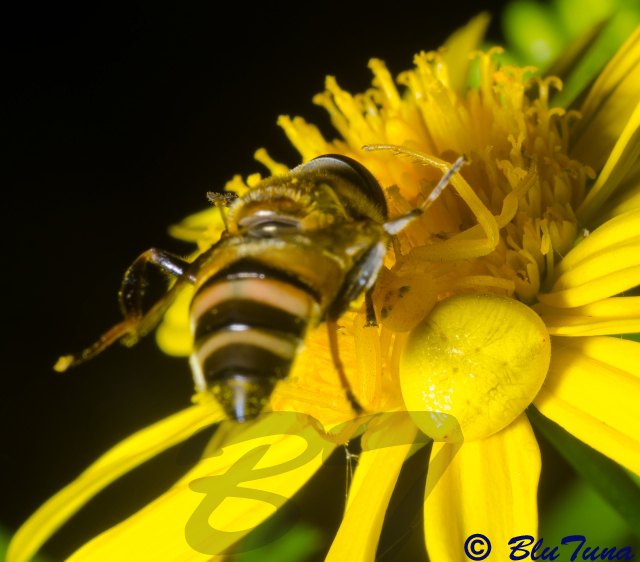
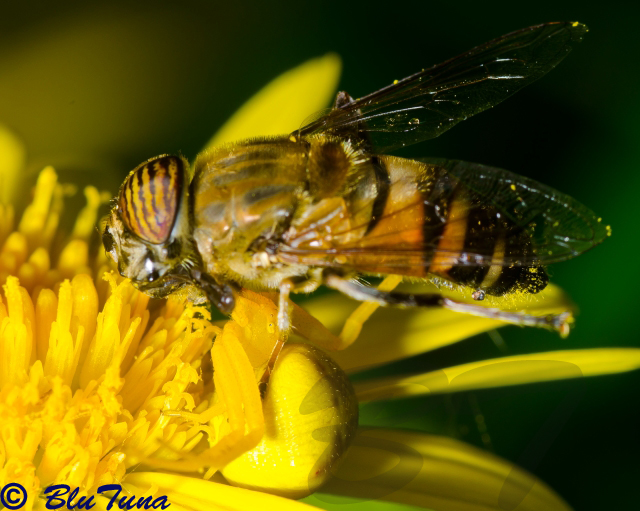








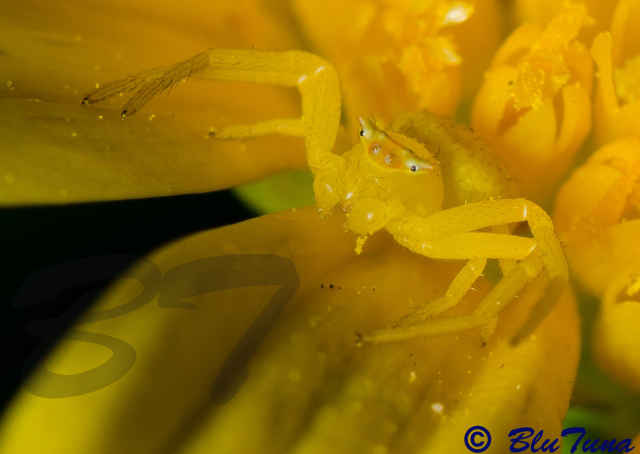
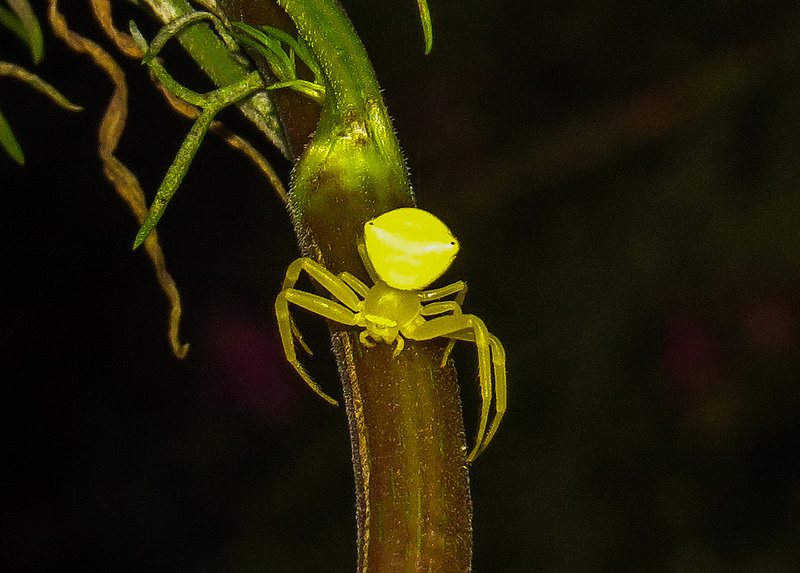 © steamtrainfan
© steamtrainfan

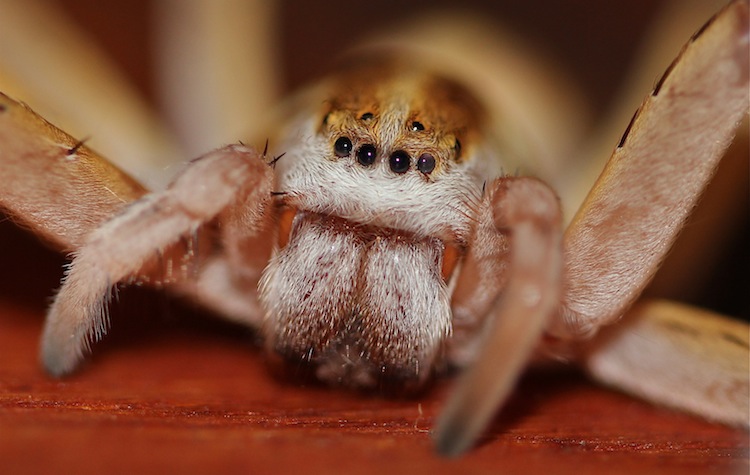
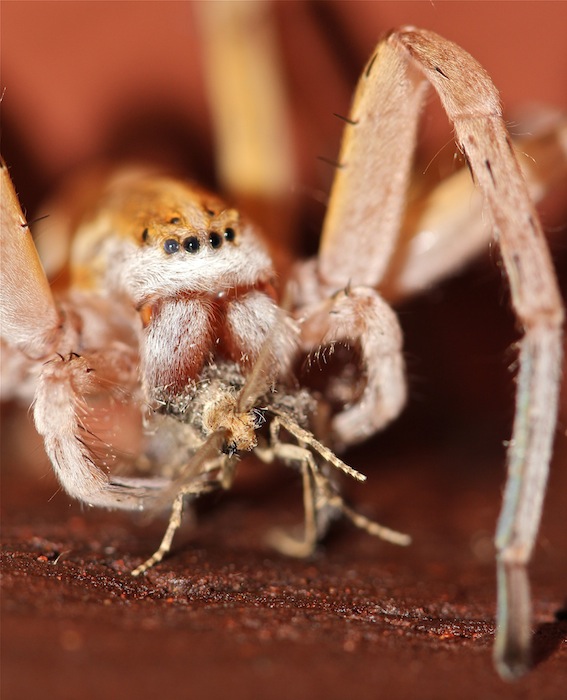
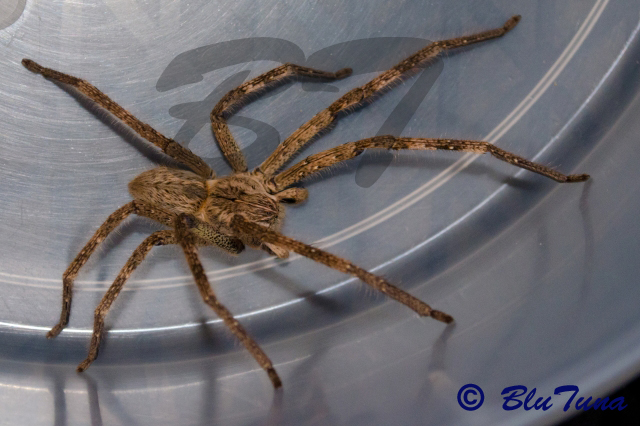 © BluTuna
© BluTuna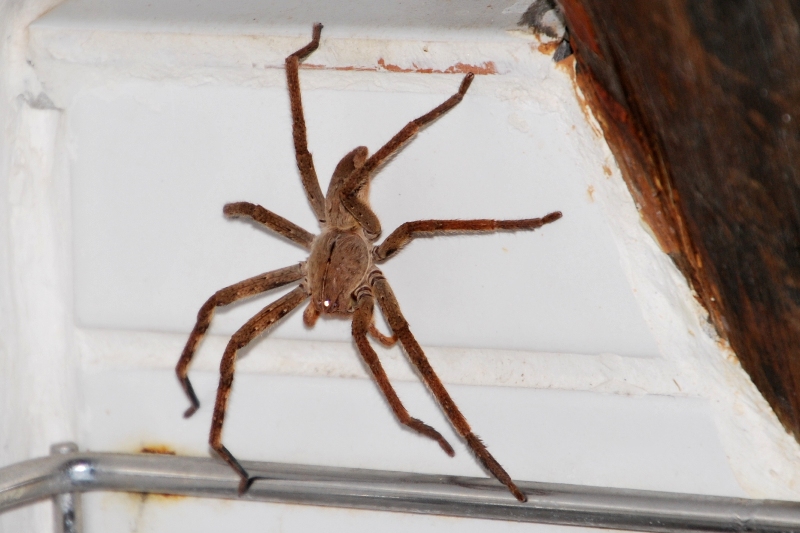 © Mel
© Mel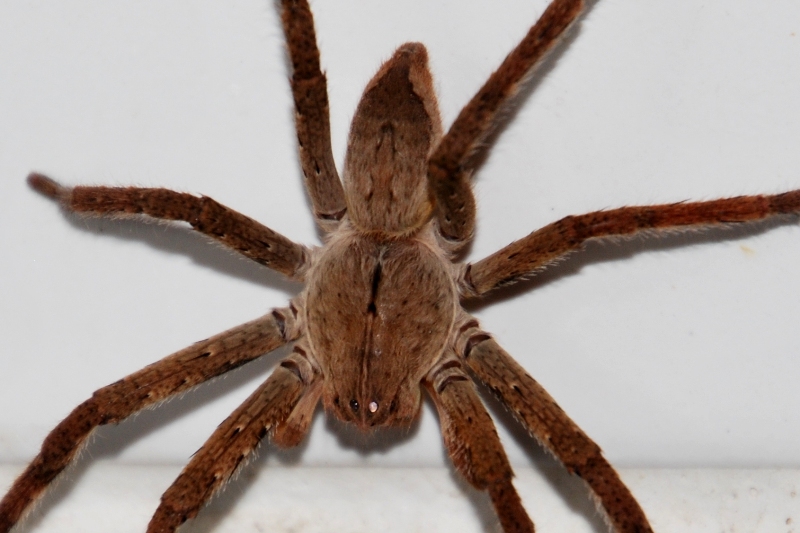 © Mel
© Mel © Mel
© Mel